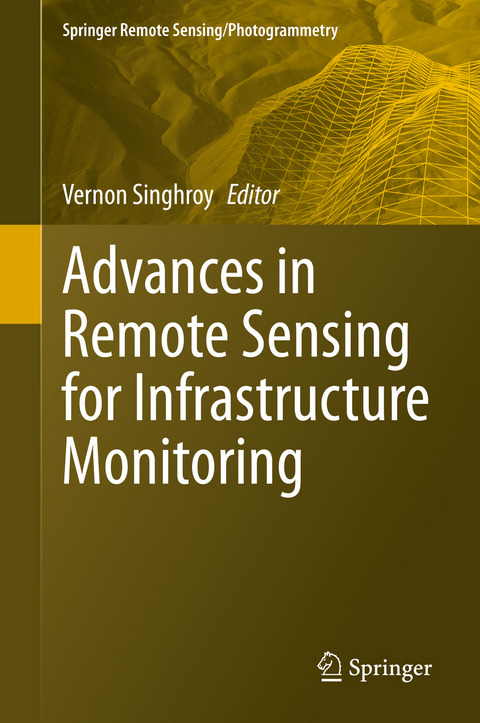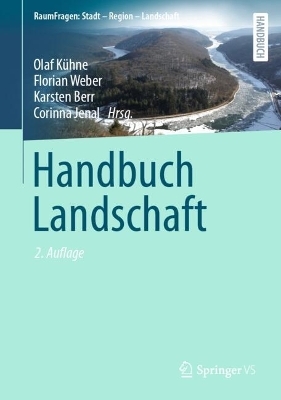
Advances in Remote Sensing for Infrastructure Monitoring
Springer International Publishing (Verlag)
978-3-030-59108-3 (ISBN)
Dr Vern Singhroy is the President of EOSPATIAL in Ottawa, Canada. He is an internationally recognized expert on remote sensing applications, and was the chief scientist of the Canadian Space Agency, RADARSAT Constellation Mission, launched in June 2019. Dr. Singhroy received his Ph.D. in environmental and resource engineering from the State University of New York, Syracuse. He is a professional engineer. A senior research scientist with the Canada Centre for Remote Sensing at Natural Resources Canada (1995-2020), Dr. Singhroy has published over 300 papers in scientific journals, proceedings, and books. He was the editor-in-chief of the Canadian Journal of Remote Sensing, and he is the co-editor of four books, including of the Encyclopedia of Remote Sensing. Dr. Singhroy has been a Professor of Earth Observation at the International Space University in Strasbourg, France (1998-2020) and he is an adjunct professor in Planetary and Space Sciences at the University of New Brunswick in Canada. Dr. Singhroy received the prestigious Gold Medal Award from the Canadian Remote Sensing Society and the Queen Elizabeth Diamond Jubilee Medal for his contributions to Canadian and international remote sensing applications and education.
Part I: Transportation, Energy and Mining Infrastructure. - Chapter 1: Advanced radar images for monitoring Transportation, Energy. Mining and Coastal infrastructure. - Chapter 2; InSAR Satellite Surveys - Key considerations for monitoring infrastructure. - Chapter 3; Sentinel-1 InSAR data for the continuous monitoring of ground deformation and infrastructures at regional scale. - Chapter 4 Protecting Canada's Railway Network using Remote Sensing Technologies. - Chapter 5: Landslide activity assessment of subtropical area by integrating InSAR, landslide inventory, airborne LiDAR, and UAV investigation: a case study in northern Taiwan. - Chapter 6: Remote Sensing of Deformation and Disturbance to Monitor and Assess Infrastructure in Urban Environments. - Chapter 7: Remote monitoring of Highway Bridges with RADARSAT-2 Satellite: Validation case study on Jacques Cartier and Victoria Bridges in Montreal, Canada. - Chapter 8: Interferometric synthetic aperture radar (InSAR) inthe context of Bridge Monitoring. - Chapter 9: Measuring Subsidence in California and its Impact on Water Conveyance Infrastructure. - Part II: Urban Infrastructure. - Chapter 10: Earth Observation Based Understanding of Canadian Urban Form. - Chapter 11: Extraction of building footprints from LiDAR: An assessment of classification and point density requirements. Part III: Infrastructure Damage. - Chapter 12 Flood mapping from multi-sensor EO data for near real-time infrastructure impact assessment: lessons learned from the 2017 spring flood in eastern Canada. - Chapter 13: The role of Landsat-8 multispectral data in spill response: three case studies. - Chapter 14: Using EO to understand the significance of Cement Production Infrastructure in the Syrian Conflict.
| Erscheinungsdatum | 26.12.2020 |
|---|---|
| Reihe/Serie | Springer Remote Sensing/Photogrammetry |
| Zusatzinfo | XII, 362 p. 196 illus., 187 illus. in color. |
| Verlagsort | Cham |
| Sprache | englisch |
| Maße | 155 x 235 mm |
| Gewicht | 751 g |
| Themenwelt | Naturwissenschaften ► Geowissenschaften ► Geografie / Kartografie |
| Naturwissenschaften ► Geowissenschaften ► Geologie | |
| Technik | |
| Schlagworte | Energy corridors • Geological mining • Geomatics • Geospatial remote sensing • INSAR • Lidar • Remote Sensing/Photogrammetry • Transportation monitoring • urban infrastructure |
| ISBN-10 | 3-030-59108-5 / 3030591085 |
| ISBN-13 | 978-3-030-59108-3 / 9783030591083 |
| Zustand | Neuware |
| Haben Sie eine Frage zum Produkt? |
aus dem Bereich


